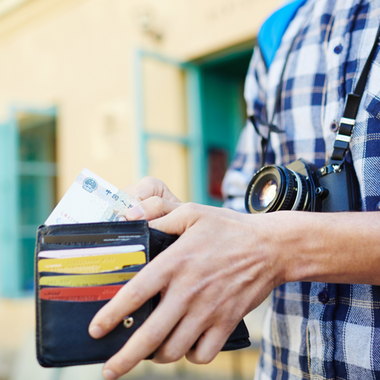
- Five minutes read
Do consumers trust online payments more now than before COVID-19?
According to our latest research consumers appear to be slightly more confident in the security of online payments than this time last year. This may explain a shift towards more frictionless payment methods. At the same time tolerance for being a victim of fraud is lower.
Lost in Transaction: Consumer payment trends 2021 was written using independent data commissioned by Paysafe and conducted by Sapio Research. The full results of this research are available to download here.
How are consumers balancing security and convenience?
When consumers that had changed their paying behaviour during COVID-19 were asked why they were using certain payment methods more frequently, 19% said that they were looking for a more frictionless payment method. And that sentiment is reflected when consumers were asked about the balance between convenience and security of payment generally.
Overall, consumers still prioritise the security of their transaction over its ease. When asked how they would assess competing priorities, 63% of consumers would advocate tightening security processes to make payments safer, and 40% are willing to accept whatever security measures are required if it eradicates fraud. Only 26% of consumers believe the correct balance between security and convenience of payments is currently being struct.
However, when this data is compared to research carried out for Lost in Transaction in April 2020, a different pattern emerges. In 2020, more than three quarters of consumers (76%) demanded more secure payments even at the expense of convenience, with only 18% agreeing that the balance was right.
And the number of consumers that are searching for a more seamless payment experience, even if it meant the security of their transactions was lower, has increased 110% in the past 12 months. So despite security of payments being the more decisive factor, there is a clear shift towards convenience being of growing importance.
Q: When weighing up convenience vs. security of financial data when making a purchase online, what element of risk would you be willing to accept?
So do consumers trust online payments more than last year?
An explanation for this development could be that consumers’ baseline level of trust in online payments is higher now than this time last year. When consumers are asked for their opinion on payments security more generally, a third (34%) said that this was the case. And this is even more pronounced in the US, where 42% of consumers agreed that they had more trust in online payments now than 12 months ago.
A greater percentage of consumers (40%) said that they were more concerned about being a victim of fraud than this time last year, and 44% said that they still felt uncomfortable when entering their financial details to pay online, but these figures have fallen from last year. In 2020 48% of consumers said that they were more concerned about being a victim of fraud than the previous year, and the same percentage did not feel comfortable entering their financial data to pay online.
Despite this, the majority of consumers feel more comfortable using online payment methods where their financial details are not shared with the retailer (59%) and are more likely to shop with businesses that already have their payment details securely stored (54%).
And a further consequence of the apparent growth in trust of online payments is a lower tolerance for being a victim of fraud. Less than half (45%) of consumers agreed that a certain level of risk of fraud is inevitable when shopping online, compared to 56% that agreed the same in 2020. And this lower tolerance for fraud is universal across every market; even in the US, where the higher percentage of consumers accept some risk (53%), this has fallen from 63% in 2020.
Q: To what extent do you agree with the following statements?
Consumer trust in biometrics may be weakening
One area that may be of concern, particularly in Europe as Strong Customer Authentication legislation continues to be implemented and enforced, is a slight waning level of support in biometrics to verify online payments. 45% of consumers agree that biometric authentication makes payments more secure and only 37% still have more faith in passwords, but this has fallen from 53% who agreed the same in 2020. For the payments industry and retailers, educating consumers about the benefits of biometric authentication must remain a priority.
Lost in Transaction: Consumers payment trends 2021 is available to download now.
The survey was conducted among 8,111 consumers (representative by age and gender) in the U.S. (2,000), UK, Canada, Germany, Austria, Bulgaria, Italy (all 1,000). The interviews were conducted online by Sapio Research in March - April 2021 using an email invitation and an online survey.
The use of any third-party brand names in this report is for illustrative purposes only. Consumer attitudes to the specific brands were not considered or analysed as part of the research this report is based on and this report does not represent Paysafe’s or any other party’s views towards the brands themselves or the services they represent.




